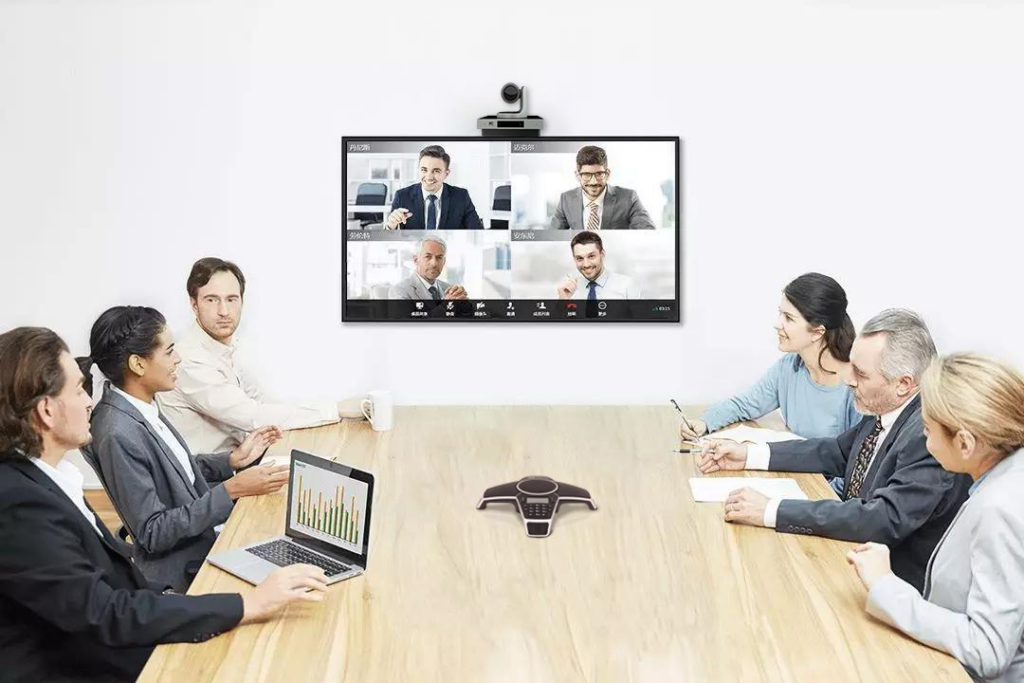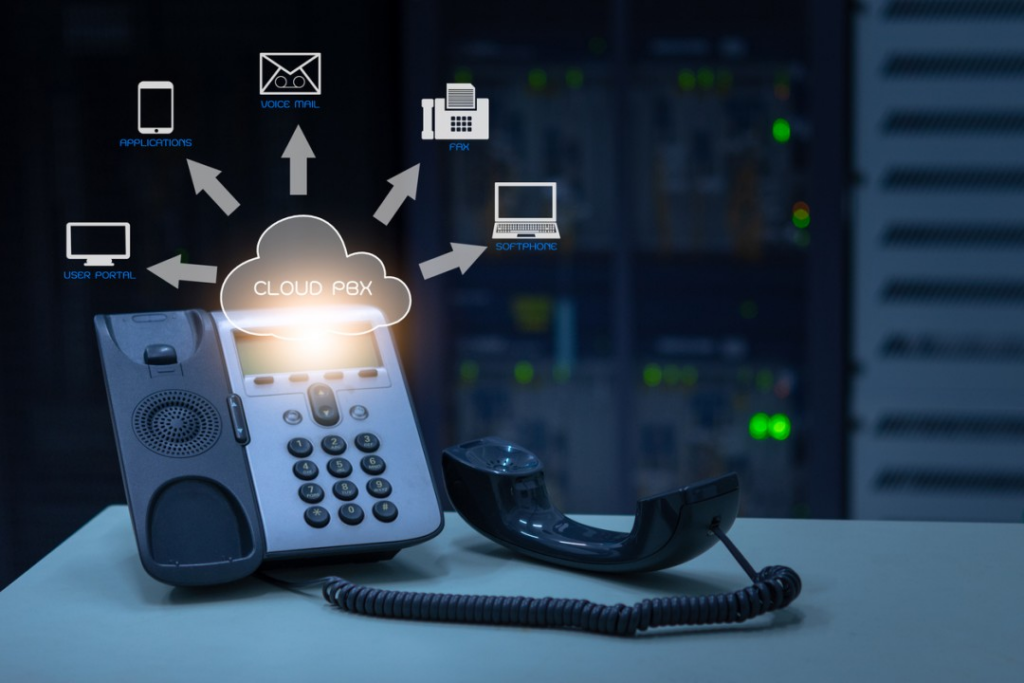IP conference phones are advanced telephony devices that enable users to conduct conference calls over the Internet.
Unlike traditional conference phones that rely on analog phone lines, IP conference phones utilize Voice over Internet Protocol (VoIP) technology to transmit calls digitally over a local area network or broadband internet connection.
The key benefit of IP conference phones is that they provide businesses with greater flexibility, mobility, and advanced features for conference calling compared to older landline systems.
As video conferencing and remote work grow increasingly common, IP conference phones are becoming an essential communication tool for organizations of all sizes.
This article will provide an overview of IP conference phone systems, their types, their key features and benefits, purchase considerations, and frequently asked questions.

Types of IP Conference Phones
IP conference phones have become very popular in recent years as businesses move towards VoIP and IP-based phone systems.
IP phones provide a lot of advantages over traditional analog phones, especially when it comes to conference calls.
There are different IP conference phones available to meet different business needs.
1. Speakerphones
- Speakerphones are the most basic type of IP conference phone. They allow multiple people in a room to join a conference call by placing the phone in the center of a table. The speakerphone has a powerful speaker and sensitive microphones to pick up voices from all directions.
- Pros: Inexpensive, portable, easy to set up. Good for small conference rooms.
- Cons: Audio quality is not great for large rooms or many participants. People far from the phone may find it hard to hear.

2. Desktop Conference Phones
- Desktop IP conference phones are a step up from speaker phones. They’re designed to sit on a table like a traditional office phone.
- Pros: Provide better audio quality than speakerphones. Easy-to-use interface with mute buttons. Good for small to medium conference rooms.
- Cons: Limited number of microphones so they may not detect voices from all directions. Not very portable.
3. Ceiling Microphone Conference Phones
- Ceiling microphone phones contain several integrated mics to pick up sound from all parts of the room. The audio processor mixes the signals to provide full room coverage.
- Pros: Excellent audio quality even in large rooms. Capture the voices of participants no matter where they are sitting. Discreet design.
- Cons: More expensive. Installation is required as it must be mounted to the ceiling. Not portable.
4. Video Conference Systems
- Full video conference systems like Polycom and Cisco provide audio as well as live video. Room systems have cameras, large displays, and multiple microphones.
- Pros: Video along with audio enhances communication and collaboration. Allows sharing of multimedia content.
- Cons: Most expensive option. Room redesign may be required—technical complexity to install and manage.

The right IP conference phone depends on your business size, budget, and conference requirements.
Speakerphones are great for small groups while ceiling microphone systems excel in large rooms.
Desktop phones provide a middle ground. Video systems add another layer of collaboration for remote meetings.
With its many benefits, IP conference phones are a smart investment for any business looking to improve communications and productivity.
Features and Benefits of IP Conference Phones
- Crystal Clear Audio: Quality IP conference phones utilize wideband audio codecs to deliver exceptional sound quality, far surpassing traditional analog conference phones. This results in clear and natural-sounding voice transmission without background noise or interference.
- Multi-Party Conferencing: Most IP conference phones support at least 4-way conferencing for hosting large conference calls. High-end models can handle 10+ participants. This enables great collaboration.
- Advanced Features: IP conference phones come with a wide range of advanced features not found on legacy conference phones. This includes call recording, call merging, phonebook integration, web conferencing controls, and more.
- Mobility and Portability: Since IP phones use WiFi or Ethernet networks, they can be easily moved between conference rooms or floors within a building. They can also enable remote users to join calls from off-site locations.
- Cost Savings: Utilizing VoIP for conferencing eliminates expensive long-distance charges associated with traditional audio conferencing solutions. VoIP calls are transmitted as data.

Key Factors When Choosing an IP Conference Phone
- Audio Quality Be sure to evaluate sound quality, microphone sensitivity, duplex capabilities, and support for wideband audio. This will affect call clarity.
- Size of Phone Consider the dimensions of the conference phone and be sure it is suitable for the size of the room. Larger units are available to accommodate big rooms.
- Number of Microphones More microphones allow for greater pickup range so those farther from the phone can be heard.
- Displays and Interface Units with larger displays and intuitive interfaces are easier to use and configure. Touchscreens offer added convenience.
- Call Features Important to have all the call features required like hold, transfer, conferencing controls, muting, recording, and more.
- Networking and Provisioning Ensure the phone supports the office’s networking standards and protocols. Also, check on auto-provisioning capabilities.
- Warranty and Support Multi-year warranties and technical support plans provide peace of mind and save on repair costs.
Conclusion
In summary, IP conference phones are rapidly replacing old analog conference phones in modern office settings.
Their superior audio quality, robust feature sets, and VoIP integration make them an indispensable conferencing tool for today’s businesses.
When selecting an IP conference phone, be sure to consider audio quality, size, microphone pickup range, and networking capabilities.
With its many benefits and continually evolving features, IP conference phones represent the future of multi-party telephony communication.
Frequently Asked Questions (FAQ)
Ques 1. What types of VoIP networks are supported by IP conference phones?
Ans. IP phones are compatible with hosted VoIP or on-premise VoIP phone systems. They support deployment on Local Area Networks using standards like SIP, H.323, or Cisco Protocols.
Wireless connectivity is enabled through WiFi 802.11 a/b/g/n.
Ques 2. Can you use IP conference phones for web meetings?
Ans. Yes, many IP conference phones integrate with leading web conferencing platforms like Zoom, GoToMeeting, Microsoft Teams, etc.
This allows users to control web meetings directly from the phone’s interface or buttons.
Ques 3. Do you need special cabling for IP conference phones?
Ans. Unlike traditional phones, IP conference phones connect using standard Ethernet cable for LAN networks, or Cat 5/6 cabling. No specialized phone cabling is required.
Ques 4. Can IP phones utilize analog phone lines?
Ans. Some IP conference phones have a PSTN connection port that allows connecting to a legacy analog phone line. This provides a backup way to make calls if the internet or LAN network has an outage.
Ques 5. What is the cost of an IP conference phone?
Ans. Pricing ranges from $200 to $1500 depending on size, features, and quality. Large speakerphones for boardrooms cost $700+, while basic 2-4 person models may be $300.
Companies can achieve significant long-term savings versus traditional conferencing.






